Easy Layered Sushi
We may earn a commission from recommended products, at no extra cost to you. See Disclosure.
- Chef knife
- Round mold
- Saucepan with lid
INGREDIENTS
- 3.5 ounces/100 grams salmon, thinly sliced
- 3.5 ounces/100 grams tuna, thinly sliced
- 3.5 ounces/100 grams grouper, thinly sliced
- 1 ripe avocado, thinly sliced
- Black tobiko
- Orange tobiko
- Chives, chopped
Sticky Rice:
- 1 cup sushi rice
- ½ teaspoon salt
- 2 cups warm water
Rice seasoning:
- 3 tablespoons rice vinegar
- 1 tablespoon sugar
- ½ teaspoon salt
INSTRUCTIONS
- Rinse the rice several times until the water runs clear. Drain in a sieve. In a pot, combine the drained rice, salt, and warm water. Bring to a boil, stirring occasionally. Reduce the heat to medium, cover, and cook for 10 minutes. Turn off the heat and let the rice sit, covered, for an additional 12 minutes.
- Heat rice vinegar, sugar, and salt in a small pan until dissolved.
- Once the rice is ready, stir in the seasoning while it is still warm to make it sticky.
- Use a sharp knife to cut the fish into thin slices against the grain.
- Use a ring mold or cutter. Place ½ to ¾ teaspoon of sticky rice in the mold and press firmly. Add a slice of tuna, another layer of rice, a slice of salmon, more rice, and top with grouper. Press down firmly and remove from the mold.
- Slice the avocado into thin strips and fan them out. Use the mold to cut the avocado slices and place them on top of each sushi piece. Garnish with tobiko and chives.
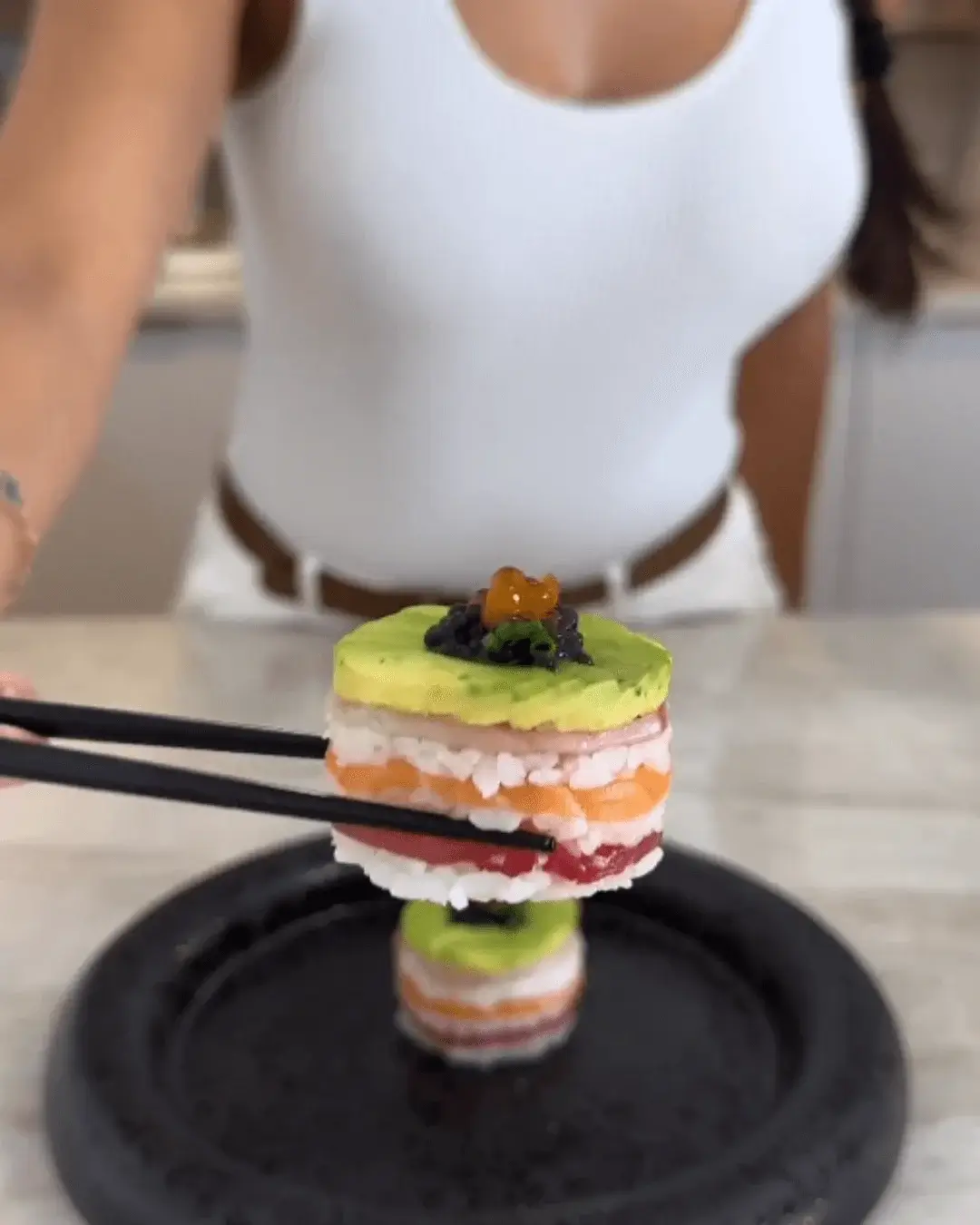
FAQ
What is layered sushi?
Layered sushi, or sushi stacks, is a sushi preparation where ingredients are arranged in layers rather than rolled. The dish typically consists of layers of sticky rice and various types of fish, such as salmon, tuna, and grouper, combined with seasonings and garnishes like avocado, tobiko, and chives. The rice is usually pressed into a mold to create a compact and neatly layered structure. This method provides a visually appealing and flavorful alternative to traditional sushi rolls.
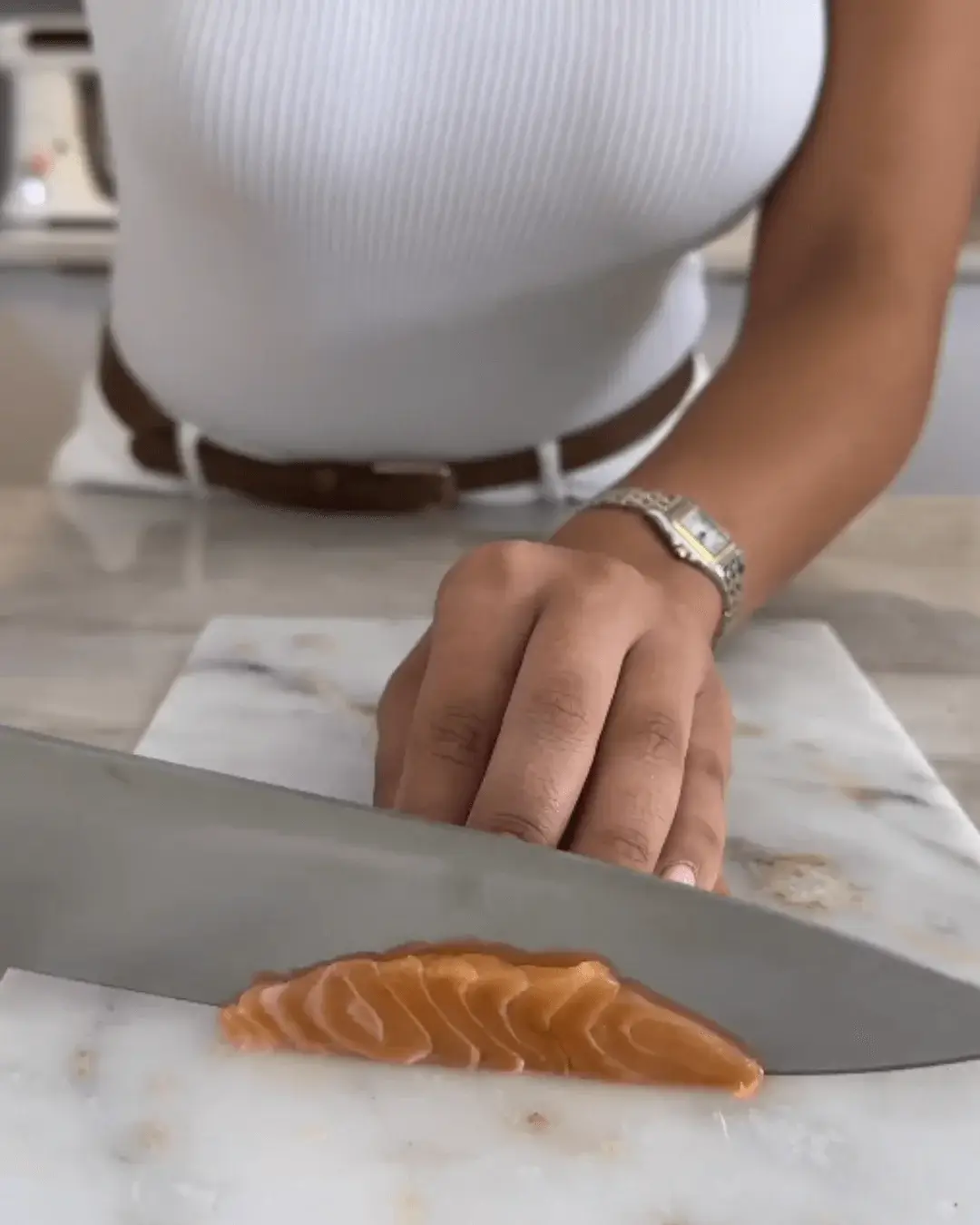
What type of fish can I use for layered sushi?
For layered sushi, you can use various types of fish commonly found in sushi, such as salmon, tuna, and grouper. These fish are known for their firm texture and mild flavors, which pair well with the sticky rice and other ingredients. It’s important to use sushi-grade fish to ensure safety when consuming it raw. You can also experiment with other seafood like yellowtail, mackerel, or even cooked shrimp if you prefer. The key is to slice the fish thinly and arrange it in layers for an appealing presentation.
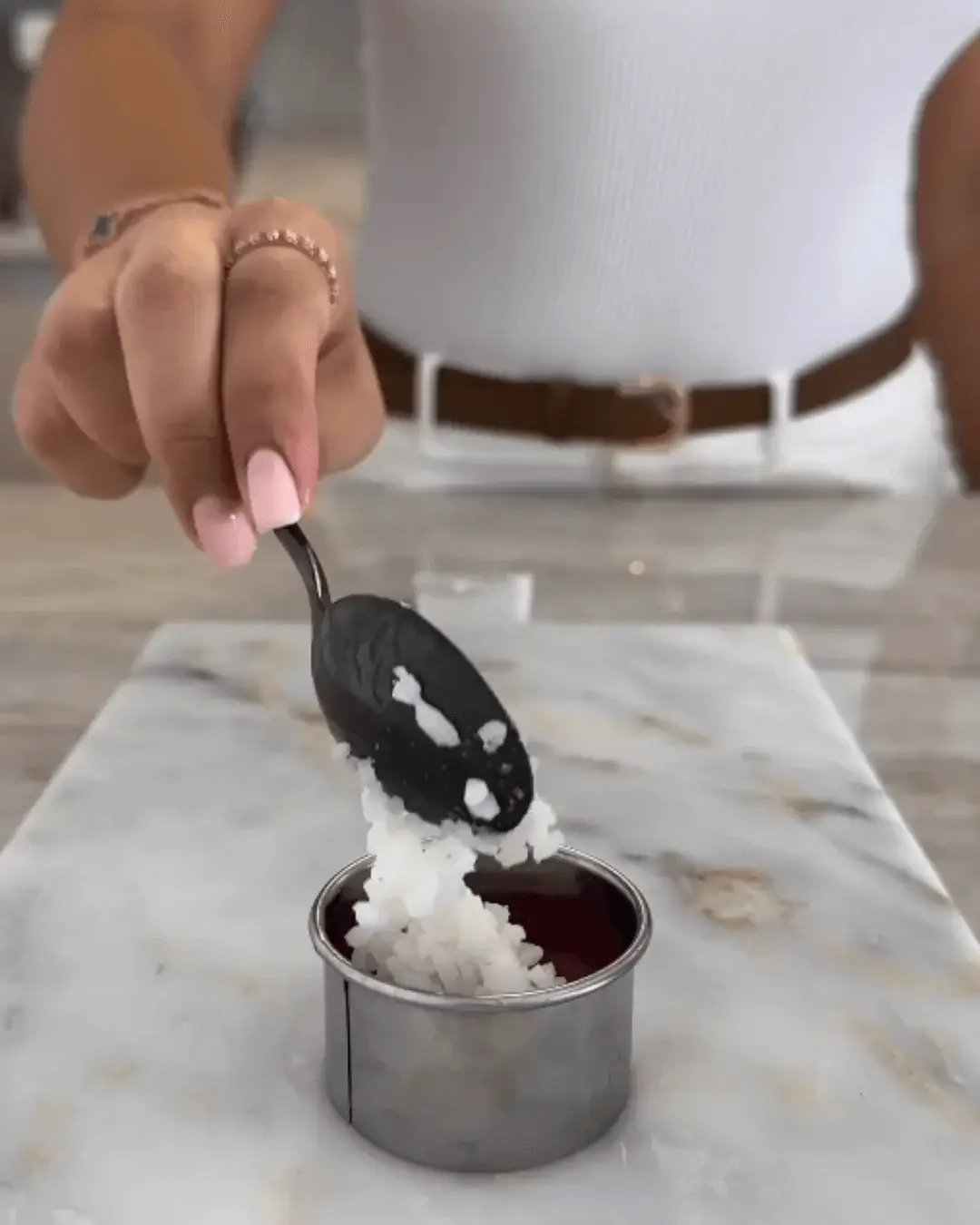
Can I make layered sushi ahead of time?
Layered sushi can be made a few hours ahead of time, but it’s best to assemble it shortly before serving to maintain the freshness of the ingredients. If you need to prepare it in advance, keep the components separate—store the cooked rice at room temperature and refrigerate the sliced fish and other toppings. Assemble the layers just before serving to prevent the rice from becoming too soft or the fish from drying out. If you do assemble it early, cover it tightly with plastic wrap and refrigerate to preserve freshness.
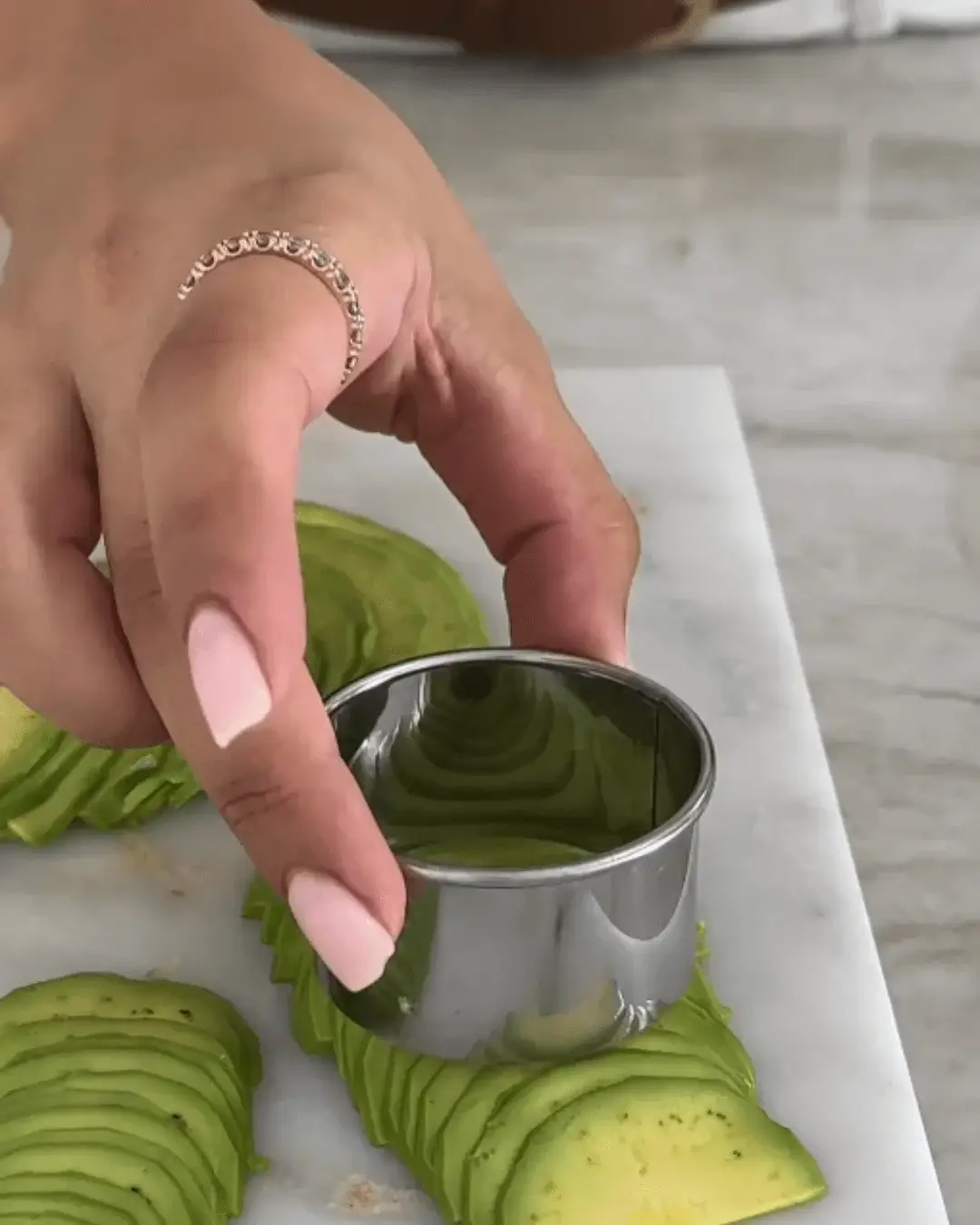
Can I use brown rice instead?
You can use brown rice for layered sushi as a healthier alternative to white sushi rice. Brown rice has a nuttier flavor and a chewier texture, which can add a different dimension to the dish. However, brown rice is less sticky than white sushi rice, so it may not hold together as well. To help with binding, you can still season it with rice vinegar, sugar, and salt, just as you would with white rice. Keep in mind that brown rice takes longer to cook, so adjust your preparation time accordingly.
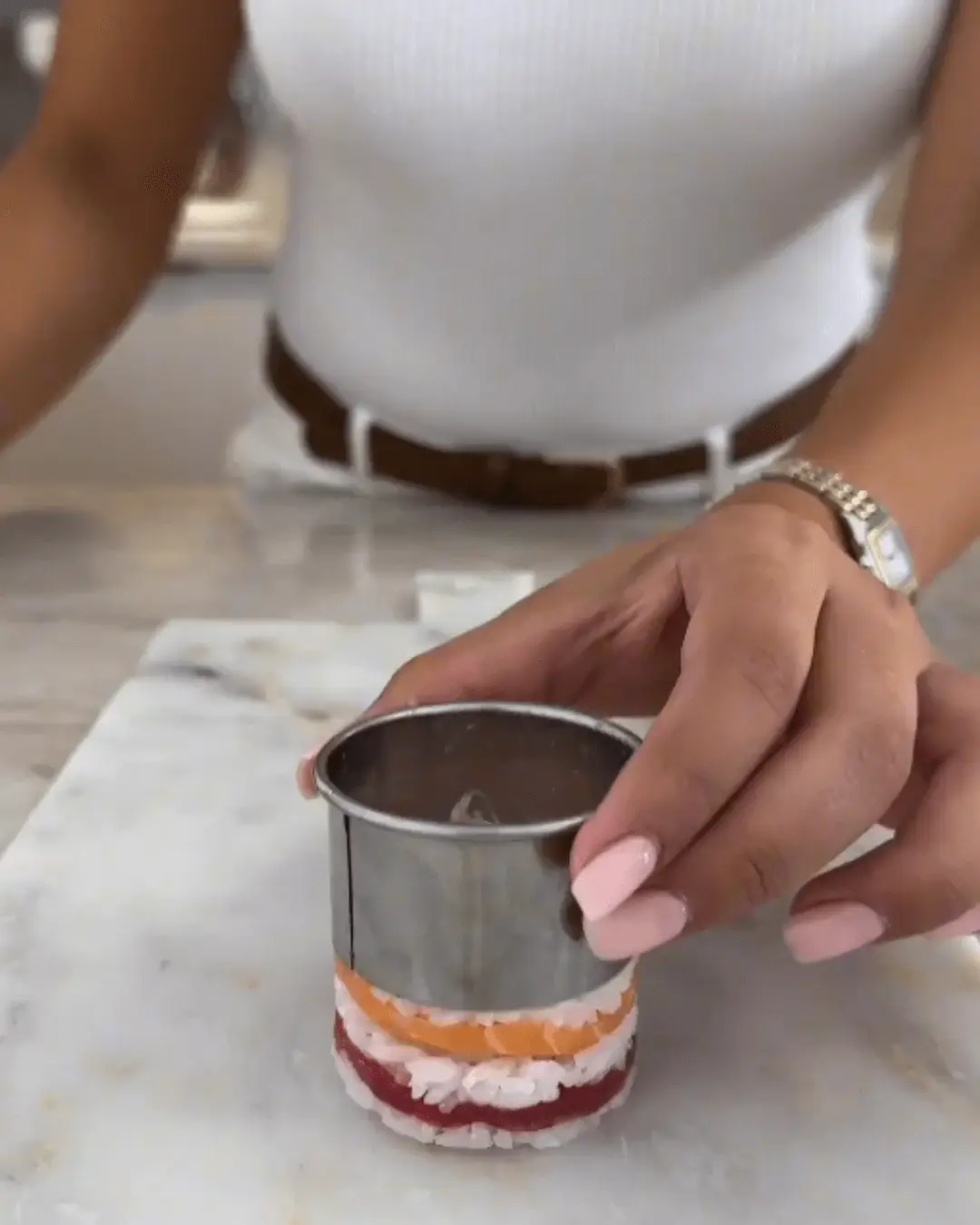
What tools do I need to make layered sushi?
To make layered sushi, you’ll need a few basic tools: a sharp knife for slicing the fish, a ring mold or cutter to shape the layers, and a pot with a lid to cook the sushi rice. The sharp knife ensures clean, precise cuts of the fish, while the ring mold helps to create uniform layers of rice and fish. You may also find a rice paddle useful for spreading and pressing the sticky rice into the mold. These simple tools are essential for achieving the neatly layered structure that characterizes this sushi style.
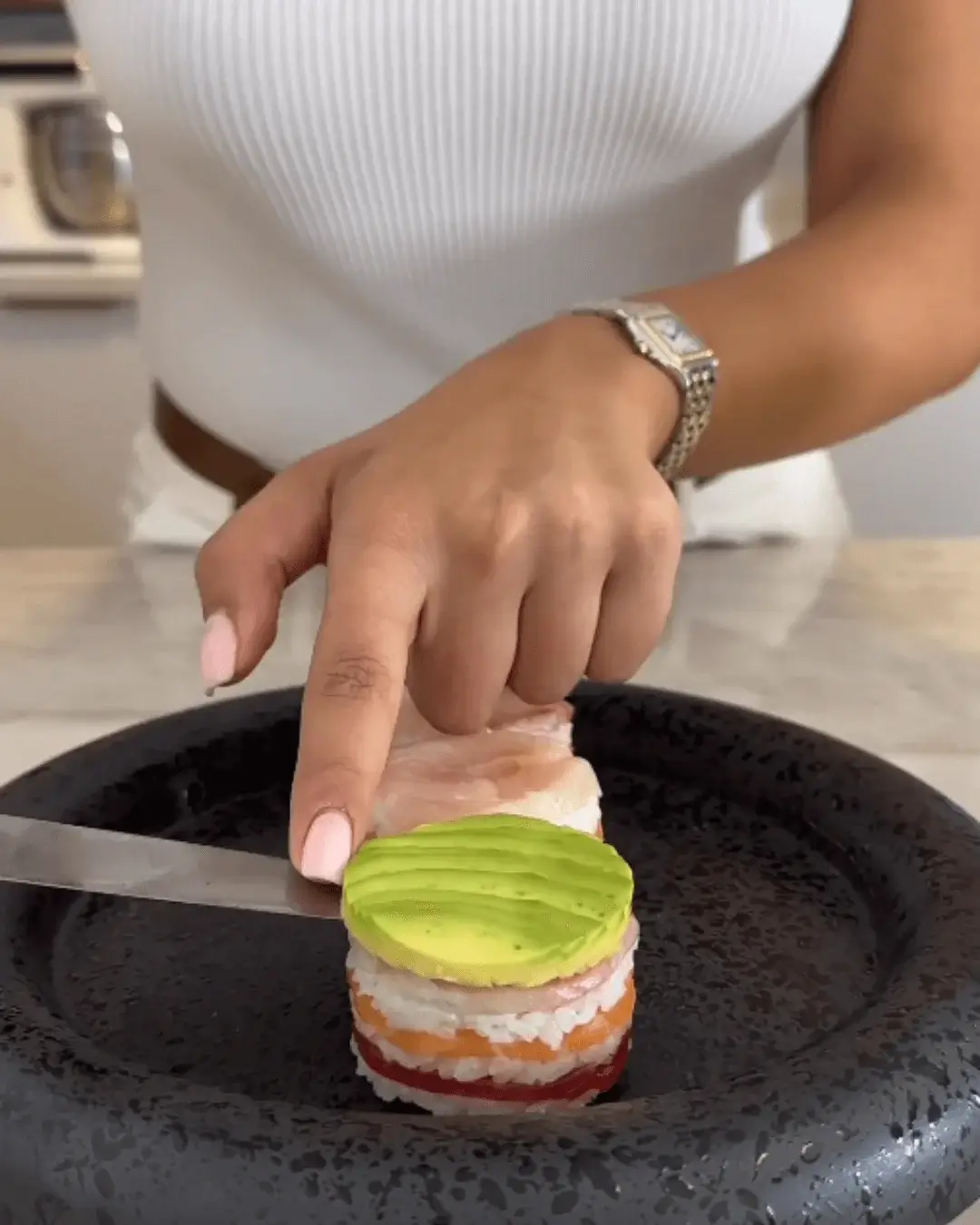
How do I prevent the rice from sticking to the mold?
To prevent the rice from sticking to the mold when making layered sushi, you can lightly dampen the inside of the mold with water before adding the rice. This creates a thin barrier that makes it easier to release the rice from the mold. Another tip is to use a non-stick cooking spray on the mold. Additionally, pressing the rice gently but firmly helps it hold together without sticking too much. If the rice is too sticky, using wet fingers or a rice paddle to smooth it out can also help prevent sticking.
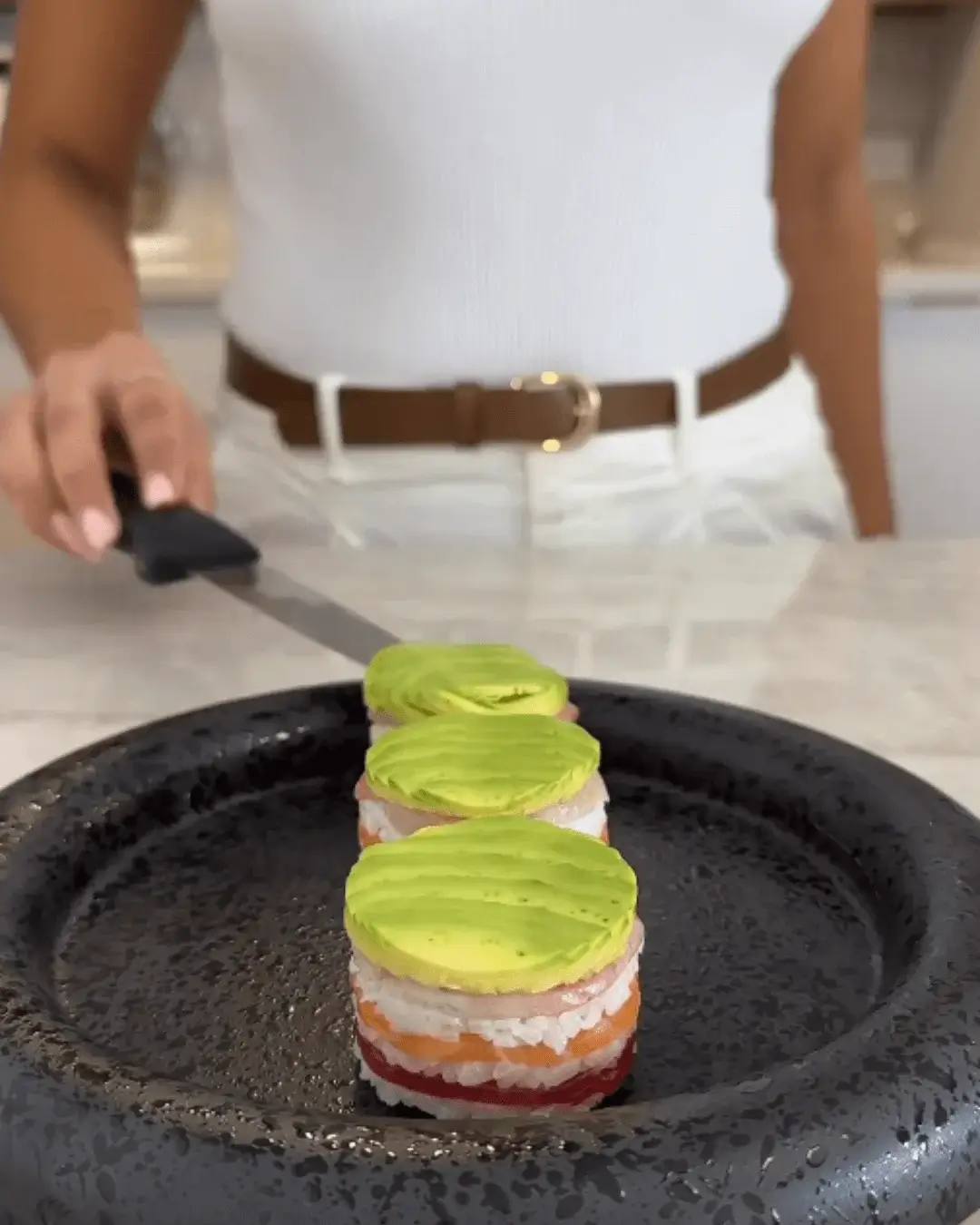
What can I substitute for fish in layered sushi?
If you prefer a vegetarian or non-fish option, you can substitute the fish in layered sushi with various ingredients. Avocado, cucumber, and mango are popular choices that provide a fresh and flavorful alternative. You can also use marinated tofu, grilled mushrooms, or pickled vegetables for added texture and taste. Cooked shrimp or crab can be used as a seafood alternative if you’re looking for a different protein source. The key is to select ingredients that pair well with the sticky rice and other toppings, ensuring a balanced and delicious result.
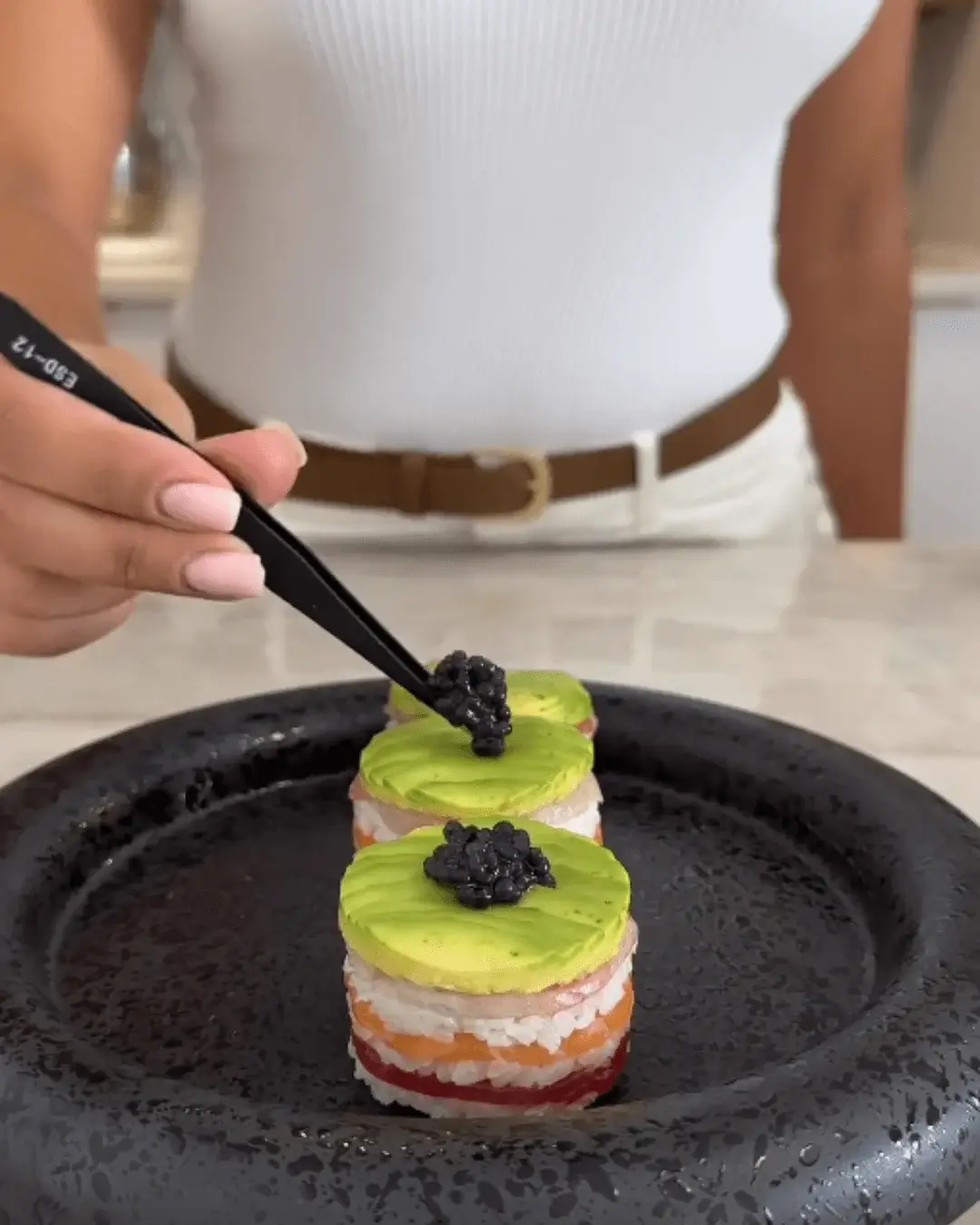
Can I add sauces to layered sushi?
Yes, adding sauces to layered sushi can enhance its flavor and presentation. Common sauces include soy sauce, spicy mayo, eel sauce, and ponzu. These can be drizzled on top or layered between the ingredients for added depth of flavor. Spicy mayo, made from mayonnaise and sriracha, adds a creamy, spicy kick, while eel sauce provides a sweet-savory balance. Ponzu, a citrus-based soy sauce, offers a tangy contrast. When adding sauces, be mindful of the quantities to avoid overpowering the delicate flavors of the fish and rice, keeping the dish balanced.
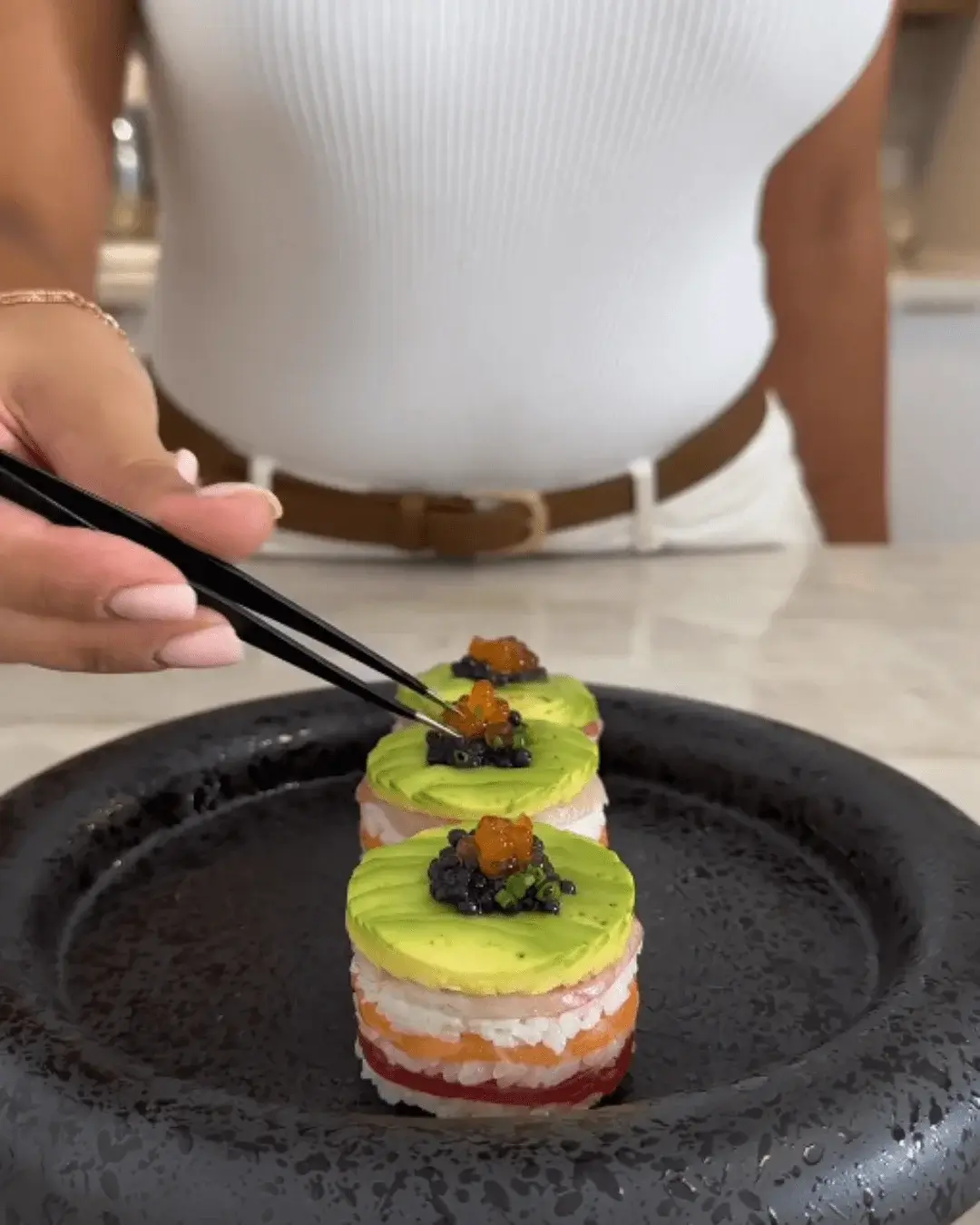
How do I store leftovers?
To store leftover layered sushi, wrap each piece tightly in plastic wrap to prevent it from drying out. Place the wrapped sushi in an airtight container and store it in the refrigerator. It’s best to consume the leftovers within 24 hours, as the quality of the fish and the texture of the rice can degrade over time. The rice may harden in the fridge, so if possible, allow the sushi to sit at room temperature for about 15-20 minutes before eating. However, freshly made layered sushi is always preferable to enjoy the best taste and texture.

